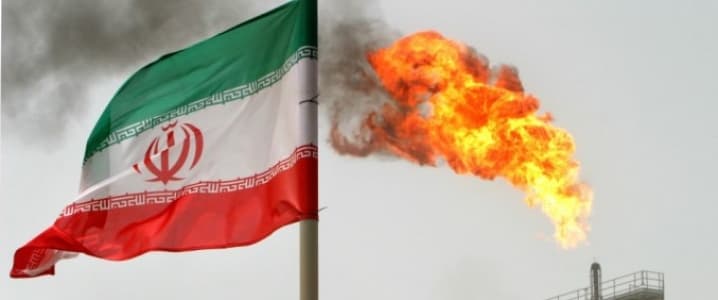Although its post-sanctions production boom appears to be have waned, the Islamic Republic of Iran still hopes to increase its energy exports, exploit new production contracts and expand its market share in 2016.
Mohsen Ghamsari, director of international affairs for the National Iranian Oil Company (NIOC) told Bloomberg that Iran hopes to double its energy exports this year, provided that market demand remains stable. Iran currently produces 3.8 million bpd and exports around 2 million bpd, a tremendous increase from 2015 and a figure which comes close to the country’s peak production before western sanctions curtailed the industry in 2012.
Mr. Ghamsari believes that Iran’s export threshold is over 4 million bpd, and such a figure is achievable provided the “right conditions” are met. Officials at NIOC and Iran’s energy ministry have been prone to bluster in the last year, yet the country’s recovery has astonished observers and could be indicative of an even more radical increase in production and exports, should the market recover sufficiently.
Iran’s total production target in oil and gas condensates is 5.8 million bpd by 2021, which if Iranian domestic demand stays constant at 1.8 million bpd would allow exports to reach 4 million bpd. Iran is prepared to handle the new exports by increasing its available tanker fleet and completing additional export agreements.
In June the surge in Iranian production appeared to slow, chiefly due to the difficulty the country faced in enticing major companies to resume purchases. Demand for Iranian crude has been driven by East Asia, chiefly Japan, South Korea, India and China. But Europe has always been the traditional market for Iran and interest there has been sluggish. Related: Oil Industry Faces Huge Worker Shortage
Much of the skepticism surrounding whether to embrace Iran stems from concerns over whether Iran will return to its old “buy-back” contract formula. Statements from Bijan Zhanganeh, the oil minister, in November that Iran would radically upend its contract system offered some indication that change was on the horizon. A new system, referred to as the Iranian Petroleum Contracts (IPC) would allow for more flexibility and bring badly-needed investment back into the industry. To achieve its goal of 4.8 million bpd by 2021, Iran needs an estimated $100 billion in new investment. If it hopes to reclaim market share in Europe, cooperation with the Western international companies will be crucial.
The buy-back formula, which prohibits companies from booking reserves or owning equity stakes in national firms, is extremely unpopular among companies, and firms including ENI, Total and Shell have all indicated their unwillingness to return to Iran unless the buy-back formula is altered.
Yet hard-liners within the Iranian regime has resisted calls to reform the system and the push to embrace the IPC has been slow. In early July the head of NIOC, Ali Kardor, announced that Iran would only be offering buy-back contracts to foreign companies. The announcement brought a puzzled response, as Kardor was seemingly contradicting months of announcements from Zanganeh and other Iranian oil officials.
Like many aspects of Iran’s internal political system, the decision over how to proceed on the oil contracts is shrouded in mystery. On July 5 Supreme Leader Khamenei declared that “major reforms” were needed to the country’s oil contract system, without going into further detail. His comments were elaborated upon by Iran’s vice president of legal affairs, who said on July 10 that the new contract system will be revised “in line with national interests.” As the buy-back scheme has long been touted as a way for Iran to control its energy resources and protect them from foreign influence, this could be an indication that the IPC will be less revolutionary than hoped. Related: Why Did China Grossly Overpay For A Utility In Brazil?
Zhanganeh remains optimistic. He has publicly stated that the first IPC round will be ready in three months, with initial contracts offered in September. He continues to assert that the IPC will represent a radical change from the buy-back formula, with joint ventures established between NIOC and foreign companies.
Amir Hossein Zamaninia, the deputy oil minister for international affairs, went into greater detail on July 10. He stated that while 150 companies had entered into discussions with the Iranian government over the last two years, no contracts had been signed. The first IPC agreements would be made within three months and special priority will be placed on establishing joint ventures and increasing the rate of recovery. Iran’s average ROR is around 25 percent, but modern technology and improved methods could increase that to 40-60 percent. Total gains from a reinvigorated energy industry could total $40 to $50 billion annually, according to Zamaninia.
The fight over the IPC is largely a political struggle between moderates like President Hassan Rouhani and Zanganeh, who see greater engagement with the West in energy production as crucial to the country’s future, and hard-liners anxious to avoid greater foreign influence over Iran’s economy. Khamenei’s comments could indicate a shift in one direction or another, but the opacity of Iranian politics makes it difficult to determine who will win the fight over Iran’s energy future. It is likely the oil majors and the world at large will have to wait until September.
By Gregory Brew for Oilprice.com
More Top Reads From Oilprice.com:
- Merger Of Libya’s Rival Oil Companies Meaningless Without Control Over Oilfields
- Could Helium Help Canada Recover From The Oil Bust?
- Has Google Overtaken Tesla In The Self-Driving Car Race?



















Iran's 5.8mn b/d target includes condensate. Removing condensate from the equation leaves just 4.8mn b/d. If, and that is a very big if, Iran manages to hit this 4.8mn b/d target, and if domestic demand stays constant, which it most certainly will not, that will only leave 3mn b/d available for export.
The comments and story don't really add up... at all.